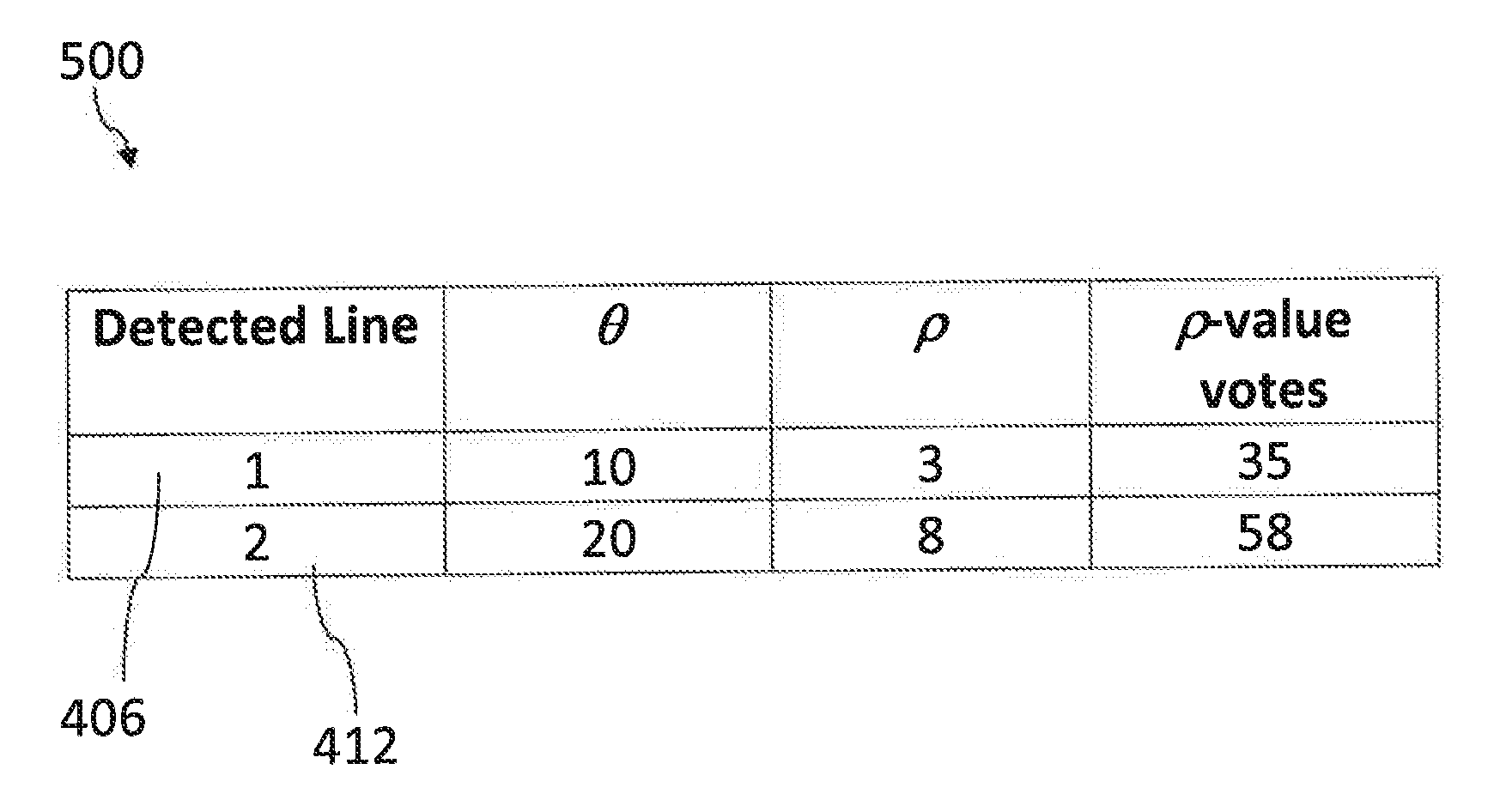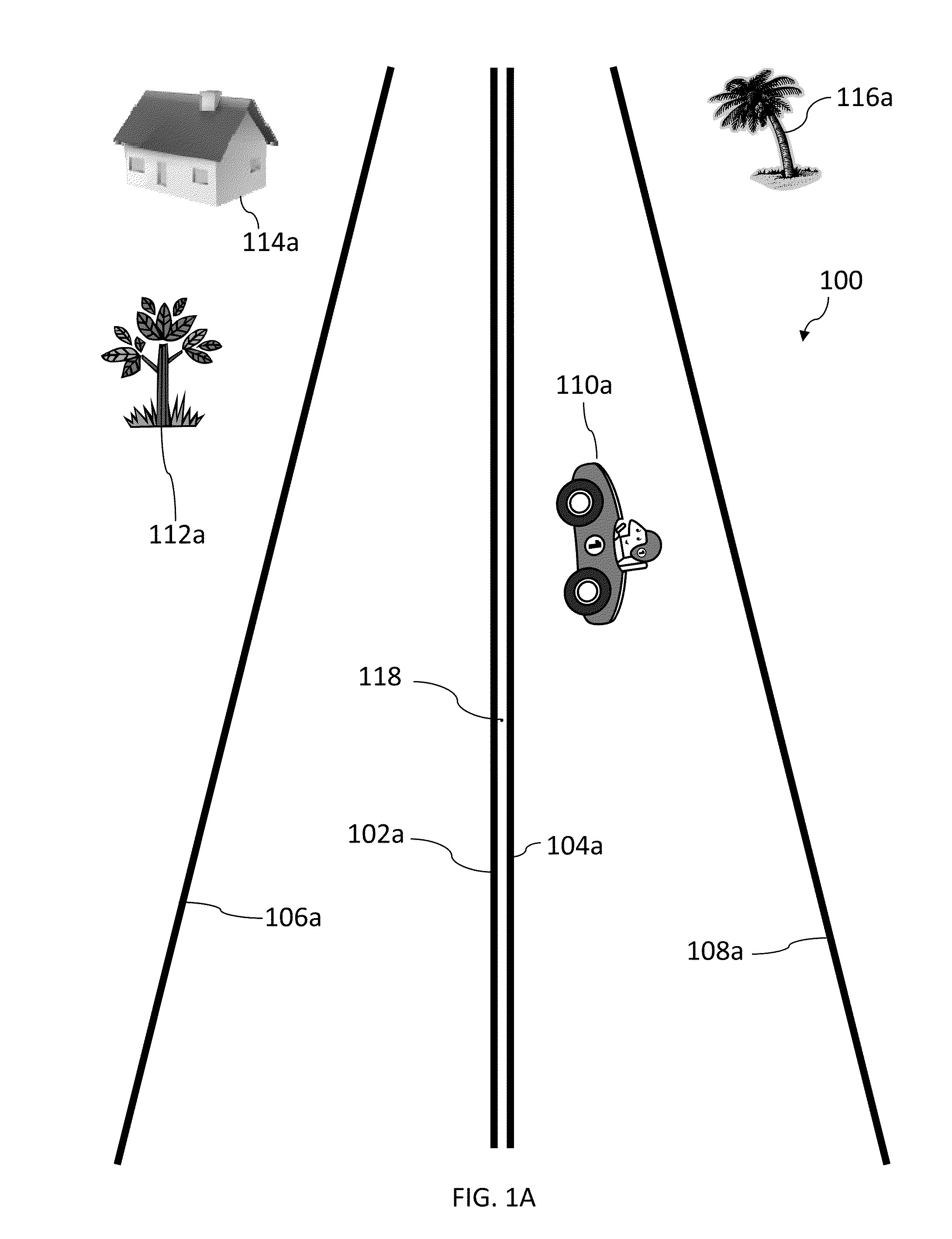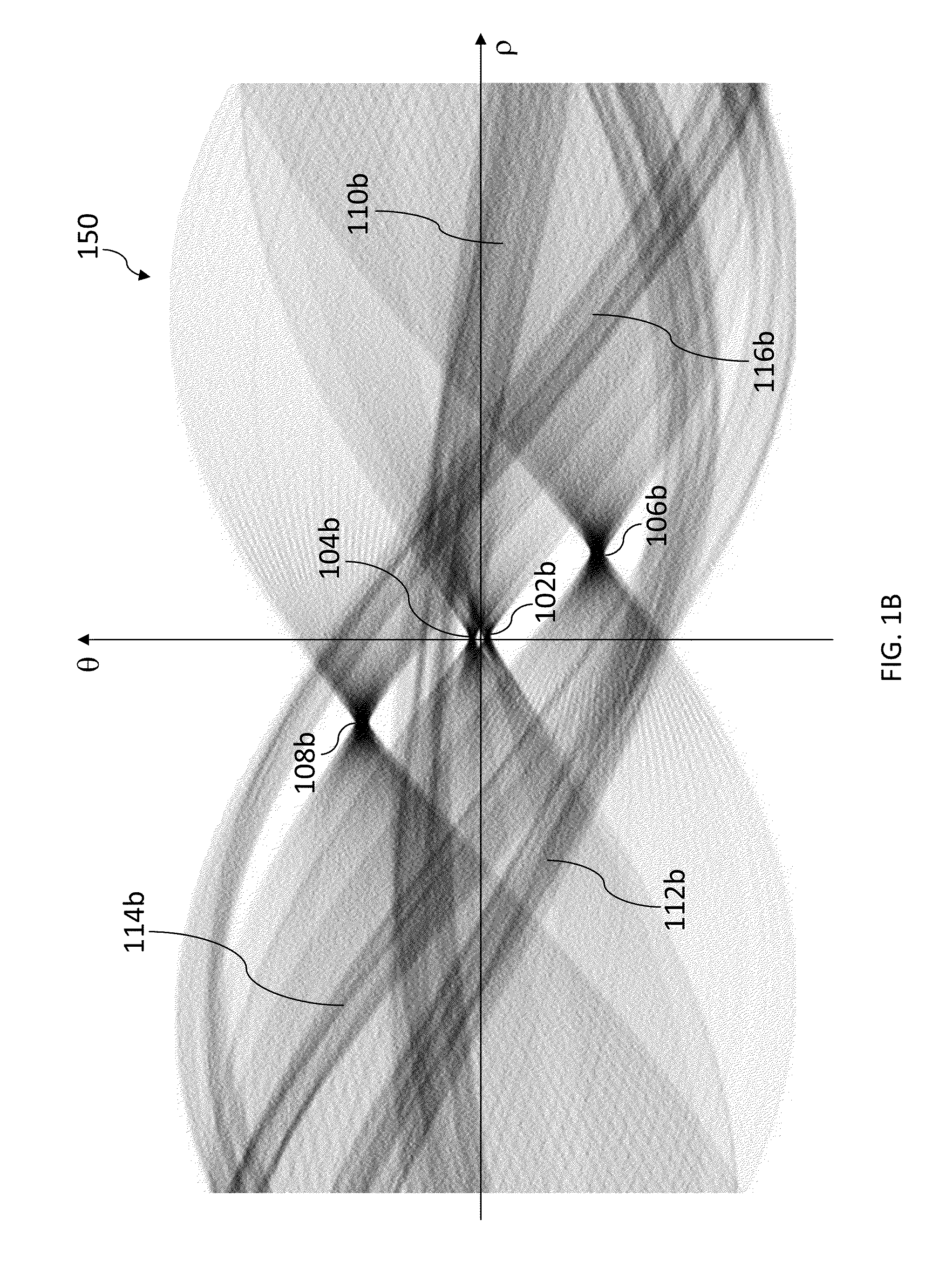Dynamic liine-detection system for processors having limited internal memory
- Summary
- Abstract
- Description
- Claims
- Application Information
AI Technical Summary
Benefits of technology
Problems solved by technology
Method used
Image
Examples
Embodiment Construction
[0024]A method 200 for detecting lines in an image using a processor having limited local memory is illustrated in FIG. 1. A brief overview of each step in the method 200 is first presented; each step is described in greater detail below. In a first step 202, image-space (x,y) pixel data, corresponding to one or more detected edges in a source image, is received from an input source. The size of the pixel data is such that it cannot be all stored in the local memory at the same time. The data may be stored in a tabular or array format, or as an ordered list, or any other format corresponding to or convertible into a two-dimensional (x,y) arrangement. Any such format qualifies as image-space (x,y) pixel data as that term is used herein.
[0025]In a second step 204, the conversion of the (x,y) pixel data from image space to Hough space is partially computed using a local memory. In a third step 206, the result of the partial conversion is analyzed for an edge corresponding to a line pre...
PUM
 Login to View More
Login to View More Abstract
Description
Claims
Application Information
 Login to View More
Login to View More - R&D
- Intellectual Property
- Life Sciences
- Materials
- Tech Scout
- Unparalleled Data Quality
- Higher Quality Content
- 60% Fewer Hallucinations
Browse by: Latest US Patents, China's latest patents, Technical Efficacy Thesaurus, Application Domain, Technology Topic, Popular Technical Reports.
© 2025 PatSnap. All rights reserved.Legal|Privacy policy|Modern Slavery Act Transparency Statement|Sitemap|About US| Contact US: help@patsnap.com



